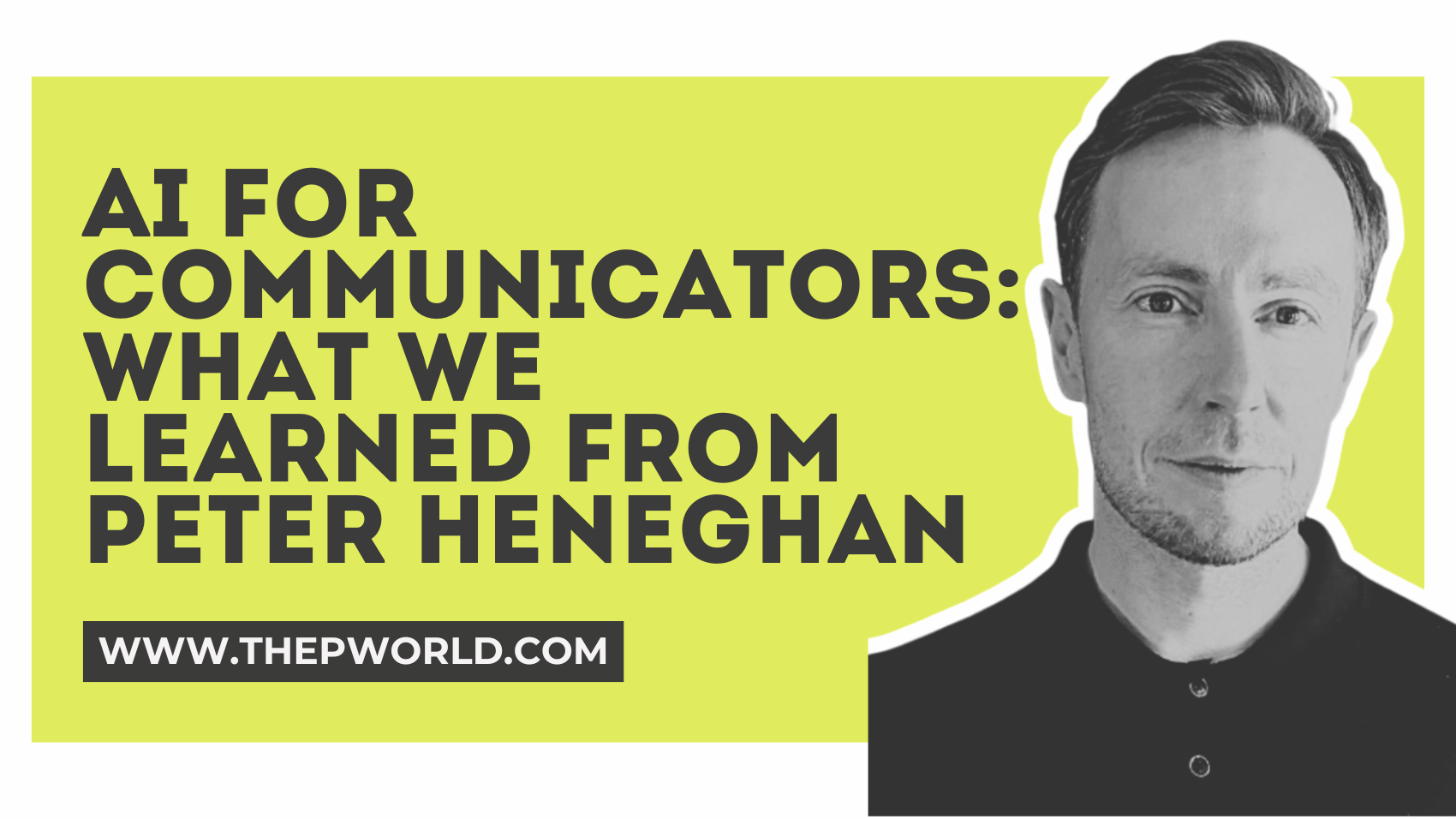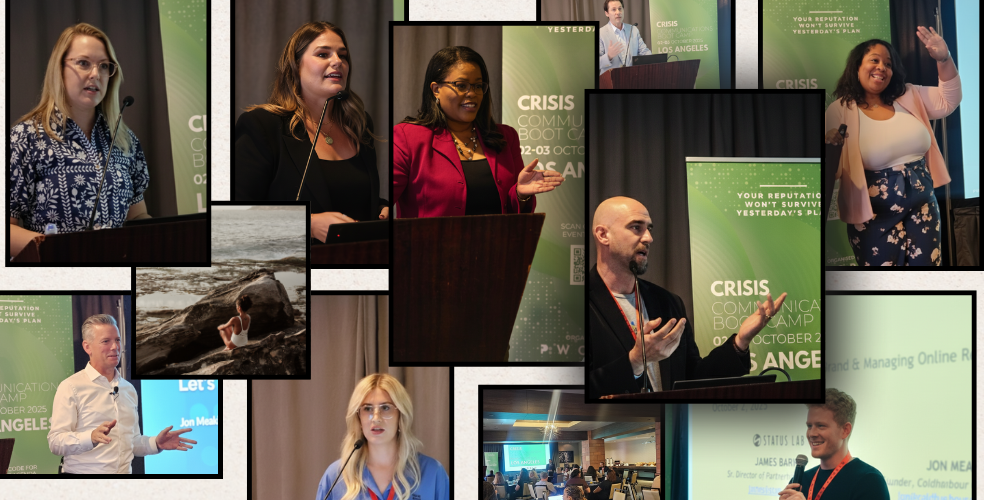 July 30, 2025
July 30, 2025

When Crisis Becomes the Constant: Lessons from Los Angeles
October 06, 2025
When Crisis Becomes the Constant: Lessons from Los Angeles
Los Angeles is no stranger to chaos. But last week, something different unfolded in the heart of the city — a room full of people determined to master it.
At P World’s first Crisis Communications Boot Camp in California, communicators, strategists, and PR leaders came together for two days of honest conversation about what it really means to lead through uncertainty. There were no clichés, no sugarcoating — just hard-earned lessons from those who’ve been there. From NASCAR’s crisis playbook to Ben & Jerry’s activism and IBM’s take on cancel culture, the message was clear: the rules of crisis are changing — fast.
The Boot Camp opened with Brent Gambill of NASCAR, who spoke about managing crisis at “200 miles per hour.” It wasn’t just a metaphor — it was a reminder that speed without clarity can crash your reputation just as fast. He urged communicators to return to the basics: get the facts, lead with empathy, and never lose sight of the bigger picture. “It’s not about controlling the story,” he said. “It’s about controlling your composure.” That line set the tone for the day — this wasn’t a conference about theories. It was about how to stay human when everything around you feels mechanical.
Then came Joy Lambert from Edelman, tackling the beast that’s keeping every communicator awake at night: artificial intelligence. Her warning was simple and sobering — the next crisis might not be real. “The biggest threat today isn’t what happened,” she said, “it’s what never did.” Deepfakes, disinformation, synthetic content — Lambert walked us through scenarios that felt straight out of a sci-fi thriller, except they’re already here. Her advice? Treat AI as both ally and adversary. Train your teams to recognize fake before it becomes fatal.
If Joy’s talk felt like a wake-up call, Michelle Agnew of The Coca-Cola Company offered a survival manual. Her “ABC” model — Know when to engage. Be proactive. No surprises. — was as crisp as the brand she represents. Agnew reminded the audience that crisis management is no longer an external discipline — it’s a cultural one. “Your team should never learn about a crisis from the news,” she said. “They should be the news.” It was a powerful reminder that the best crisis strategies start long before the storm.
Then came Brandi Boatner from IBM, and the energy in the room shifted. Brandi doesn’t lecture — she performs. With humor, honesty, and unapologetic flair, she declared that cancel culture is dead. “This is the year of uncancellation,” she said. “It’s not about cancellation anymore — it’s about accountability.” Her challenge to communicators was to become agents of repair — people who bridge divides, not amplify them. “Resilient brands don’t hide when things get tough,” she said. “They show up — and they learn.”
Emily Blair brought the Hollywood perspective — literally. Her clients include influencers, reality stars, and creators who live and die by the algorithm. Her talk, Surviving the Doom Scroll, was part therapy session, part tactical guide. “Cancel culture is a myth,” she said. “Almost everything is recoverable — if you move fast, stay authentic, and don’t panic.” She revealed what most communicators never admit: virality isn’t always a victory. In the age of outrage, silence, timing, and self-awareness might just be your best defense.
If there was one session that got everyone leaning forward, it was Ben & Jerry’s. Sean Greenwood shared how the brand has turned activism into strategy — not as a marketing stunt, but as a moral compass. “We’re not partisan,” he said. “We’re political because we care about systemic change.” It wasn’t about slogans or hashtags. It was about courage — the kind of courage that knows speaking out may cost you, but staying silent costs more.
Few people understand chaos like Angela Ingram, who led communications for the Louisville Metro Police Department during one of the city’s darkest days. Her talk was raw, emotional, and deeply human. She walked us through the minute-by-minute decision-making of a mass shooting response — what to say, when to say it, and how to lead when your own people are in pain. Her advice could apply to any communicator: “When people are afraid, they don’t want perfection. They want presence.”
The next day, Jon Meakin turned theory into adrenaline. His full-day crisis simulation threw participants into a fictional but painfully realistic scenario. Phones ringing. Journalists calling. Social media exploding. The lesson? Crisis isn’t about the plan — it’s about the people behind it. “Crisis reveals character,” Jon said. “Not just of organizations, but of leaders.” By the end, every participant walked out with a renewed sense of confidence — and perhaps a little humility.
Two days. Eight sessions. Countless insights. But one undeniable truth: you can’t control crisis — you can only control how you show up in it. The Los Angeles Boot Camp wasn’t just an event. It was a mirror held up to our profession — reminding us that in a world of speed, noise, and uncertainty, credibility still starts with courage.